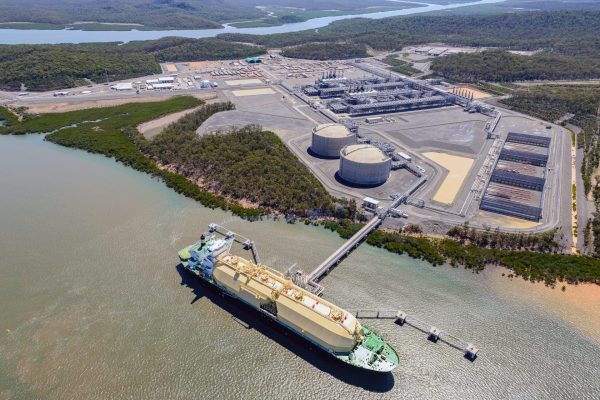The one thing we can say for sure about Australia’s economic recovery is that it has not been gas-fired.

This week the Australian Bureau of Statistics confirmed that employment in Australia has recovered to better than pre-COVID levels. This noteworthy achievement is made all the more remarkable by the fact that over the course of 2020, the gas industry cut 10 per cent of its workforce. If all Australian industries had done the same, we would have 1.3 million additional unemployed workers and 15 per cent unemployment.
Despite the government’s talk of a “gas-fired recovery”, Australia’s path out of economic recession was actually built on a platform of public investment that is being undermined by the gas industry.
For government stimulus to be effective and create as many jobs as possible, it needs to be labour intensive, regionally targeted and able to provide lasting benefits. Regrettably for the government’s “gas-fired” strategy, the gas industry employs very few Australians, operates in remote regions far away from where the majority of people lost their jobs, and causes lasting harm through the emission of carbon pollution.
Investing in gas produces a jobs-poor outcome. For every $1 million of output, the gas industry employs around 0.4 people. The same output in health and education employs more than 10 people. Investing in just about any other industry than gas would employ more people. Gas is also a poor result for the 48 per cent of Australia’s workforce who are women, and compounds the already gendered nature of Australia’s COVID recession – women account for just 26 per cent of the jobs in the oil and gas industry, compared with 73 per cent in education and training and 78 per cent in healthcare and social assistance.
The “gas-fired recovery” is also an energy policy failure. Until 2015, gas was not exported from the east coast of Australia, and it was all sold to domestic households, power stations and manufacturers at low prices. But ever since the gas industry spent $80 billion building enormous export facilities in Gladstone, Queensland, they have been charging Australian customers much higher prices.
The vast majority of gas extracted here is now exported overseas. It is not a shortage of gas that has led to higher prices for Australian consumers, but Australia’s recent exposure to the international market, caused by the gas industry’s decision to sell our cheap gas at high prices to export customers.
In devising its strategy for a “gas-led recovery”, the government has acted on secretive advice from the National COVID-19 Commission. Despite widespread concern about conflicts of interest given NCC commissioners’ close ties to the gas industry, the government chose to adopt advice from gas executives which serves gas companies but makes for a terrible economy-wide recovery strategy.
Under pressure, the government turned the commission into an advisory board, with some welcome diversification of its membership. However, the Prime Minister has emphasised its advice is part of the cabinet process, shielding it from scrutiny via cabinet confidentiality protocols. Partially as a result of that decision, it is surprisingly difficult to find out what the Morrison government’s “gas-fired recovery plan” actually is. There is no policy document showing what the so-called plan aims to achieve, no modelling on how it will reduce energy prices, no report on how it will create jobs, and no comparative analysis policy document setting out alternatives to achieve those outcomes.
Instead, we are essentially left with a series of subsidies to export-focused gas companies. The government has announced it will spend $50 million of taxpayers’ money in exploration subsidies for fracking companies in the Northern Territory’s Beetaloo Basin, and a further $174 million to upgrade roads for their fracking trucks.
Worryingly, this appears to be just the start of the proposed largesse for the gas industry. The government’s Beetaloo Strategic Basin Plan flags its intention to make more subsidies available under the Northern Australia Infrastructure Fund, and the Beetaloo Basin is just one of five “strategic gas basins” the government has signalled it intends to subsidise. Opening up these new basins will do nothing to reduce the price of gas: they are remote, expensive to exploit and will produce higher-priced gas.
Australia’s existing gas operations are already fuelling the climate crisis and wiping out hard-fought gains in renewable energy. In Western Australia, runaway emissions from just five liquid natural gas plants are five times larger than the entire savings made by all of Australia’s rooftop solar installations.
The one thing the “gas-fired recovery” will succeed in is increasing Australia’s emissions. The Northern Territory Fracking Inquiry found that fracking the Beetaloo Basin alone could increase Australia’s emissions by 40 million tonnes annually, a 7 per cent increase in Australia’s current emissions.
The best way to reduce energy prices for households and businesses is to help move them off gas. Renewable energy is significantly cheaper than gas for electricity generation, even when the cost of additional transmission and firming power to make it available 24/7 is factored in.
Like the horse and cart, steam-powered trains, and landline telephones, gas has played a role in building the Australian economy over the past century. But technological advancements and global concern about climate change have combined to ensure that the role of gas will decline over the coming decades. That is not a statement of ideology, it is economic fact.
Across Australian politics, there is a growing recognition of the absurdity of gas. NSW’s Liberal Minister for Energy & Environment, Matt Kean, publicly called out the federal government’s commitment to gas on this week’s ABC TV Four Corners exposé, stating that “if you’re interested in driving down electricity prices, you’d be mad to use gas”. Labor’s spokesman for climate change and energy, Chris Bowen, said during the Australia Institute’s recent climate webinar that the gas-fired recovery is “a fraud”. And One Nation leader Pauline Hanson has pointed out the fact that the gas industry contributes little to the Australian economy.
Instead of jobs and cheaper power for Australians, the government’s gas-fired recovery risks locking in increased emissions and increased gas prices. Obsession with protecting the gas industry simply slows the pace at which the broader economy can transition to the low-carbon world, which there is now near-consensus we must reach.
It was not gas that fired up Australia’s recovery from COVID-19. It was of course the enormous amounts of Keynesian fiscal stimulus, as the government followed the world and temporarily adopted a tried-and-tested progressive economic policy.
The one question the Treasurer was not asked when he was proudly trumpeting Australia’s employment numbers this week was this: what percentage of this turnaround was the result of the government’s much-touted gas-fired recovery?
He’s lucky, because the answer is zero.
Between the Lines Newsletter
The biggest stories and the best analysis from the team at the Australia Institute, delivered to your inbox every fortnight.
You might also like
Australia’s Climate of Discontent
Australia gives more aid to foreign fossil fuel companies than it does to our neighbours in the Pacific.
3 Gas Myths Debunked
While social licence for fossil fuels has slipped, gas seems to be clinging on longer than the rest.
Massive Gap Between Rhetoric and Actions on Emissions
Farmers know you can’t fatten a pig on market day and scientists know you can’t reduce greenhouse gas emissions by 2030 while expanding coal, oil and gas production.

